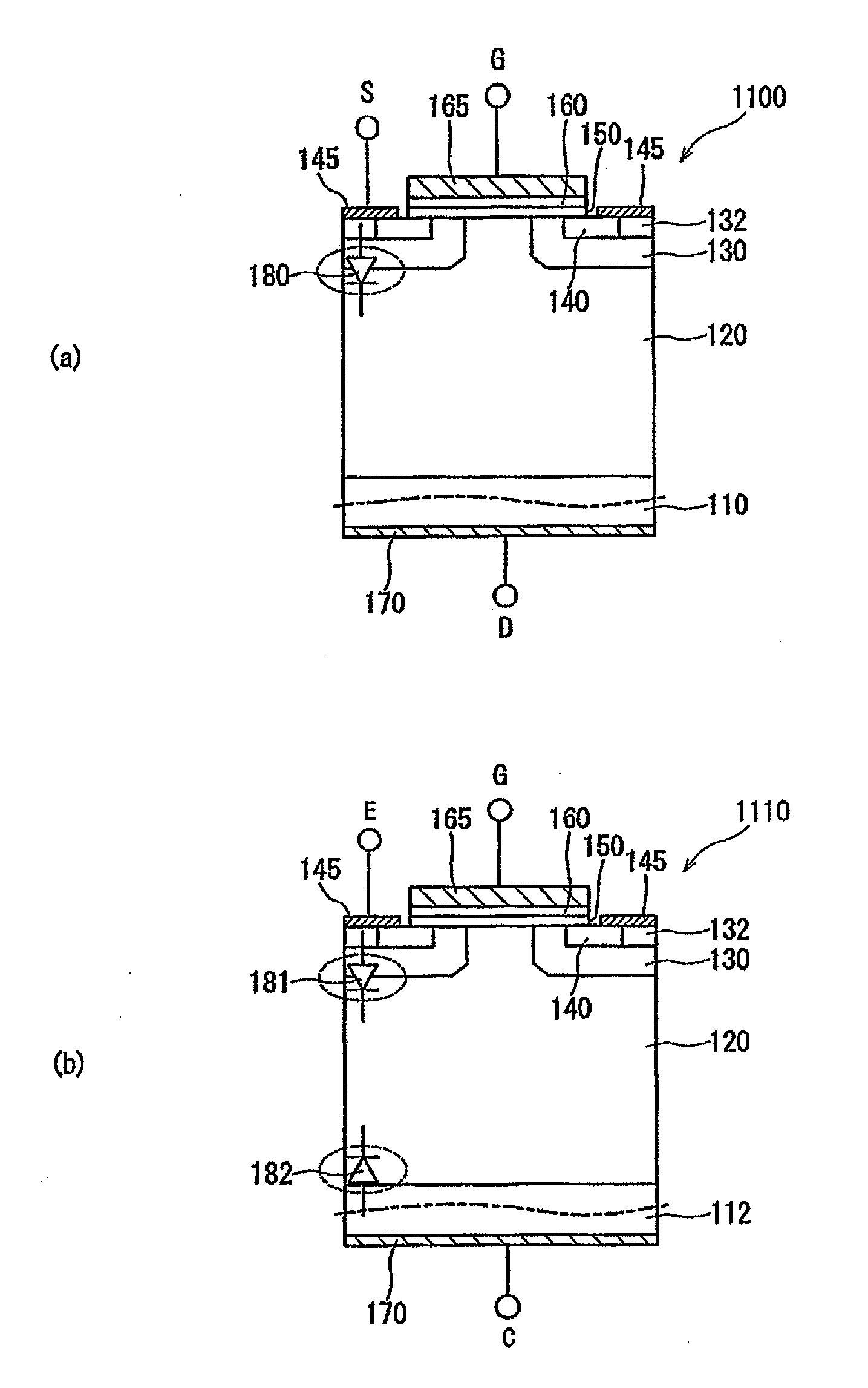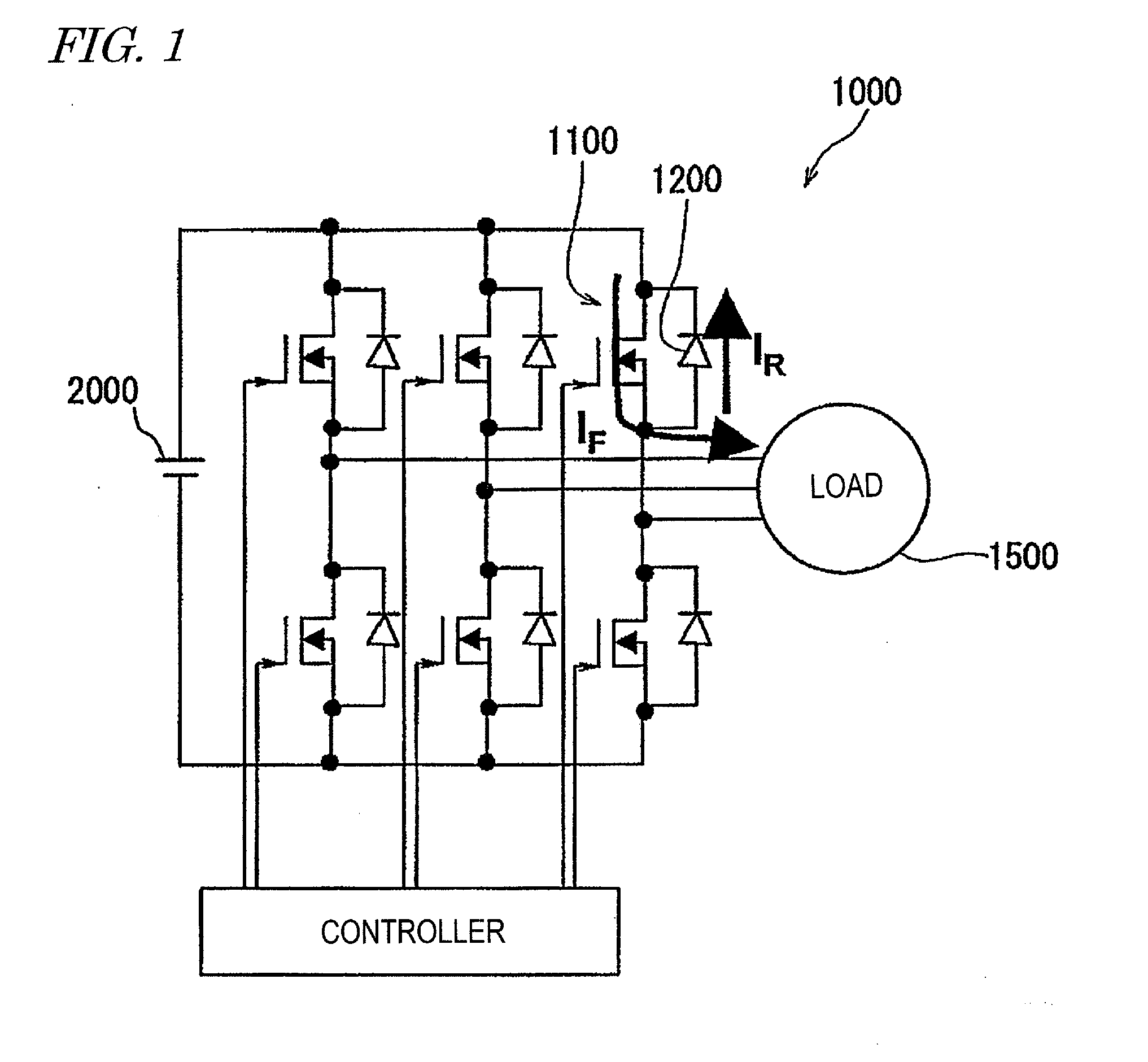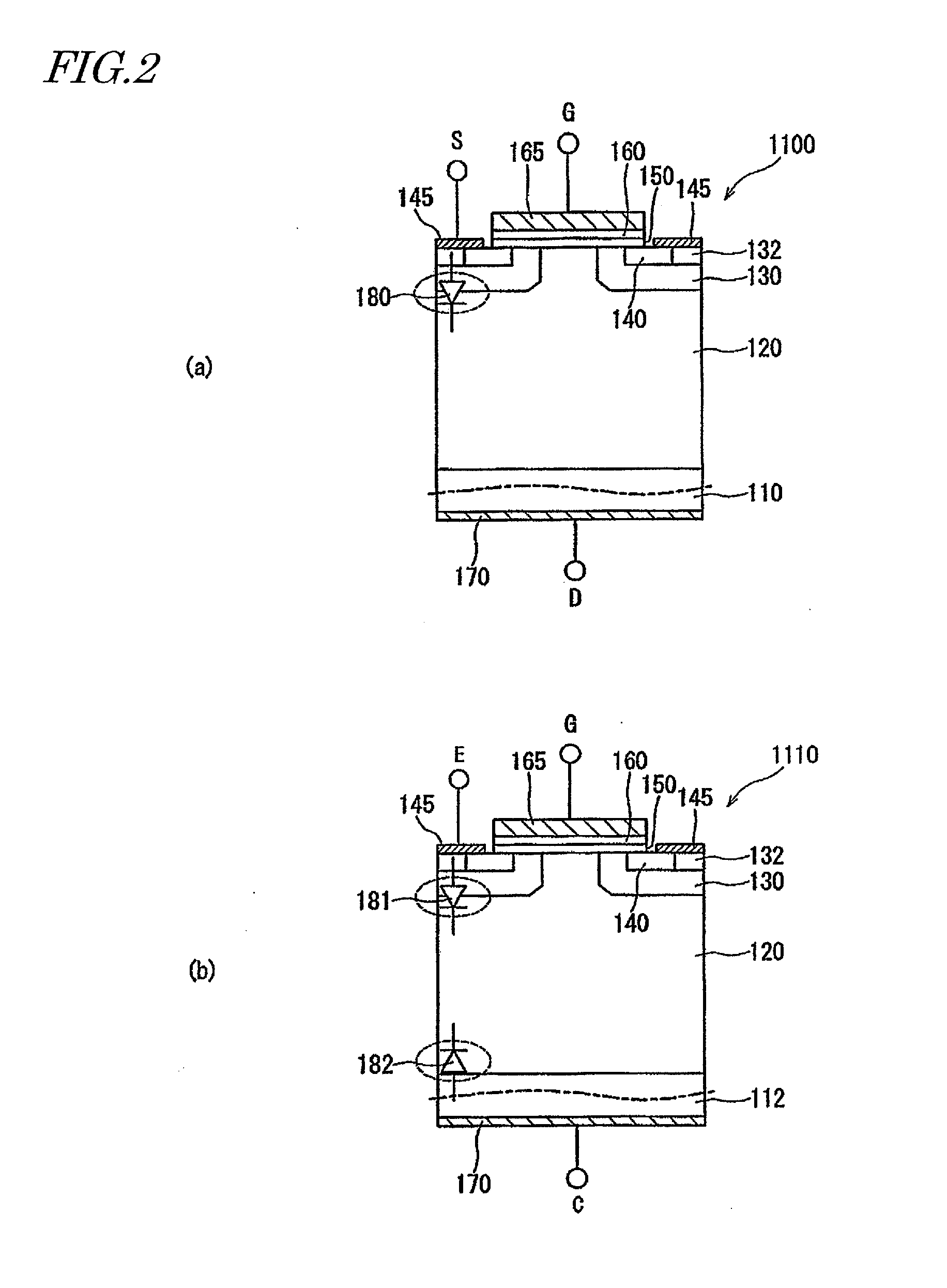Semiconductor element, semiconductor device, and electric power converter
a semiconductor and semiconductor technology, applied in the field of semiconductor devices, can solve the problems of reducing switching rate, not only recovery loss, but increasing stacking defects, etc., and achieve the effects of reducing the number of crystal imperfections, reducing the number of conductor losses, and high turn-on voltag
- Summary
- Abstract
- Description
- Claims
- Application Information
AI Technical Summary
Benefits of technology
Problems solved by technology
Method used
Image
Examples
embodiment 1
[0125]a Semiconductor Element 100 as a Preferred embodiment of the present invention will now be described with reference to FIGS. 5(a) and 5(b). FIG. 5(a) is a cross-sectional view schematically illustrating the structure of the semiconductor element100 of this preferred embodiment. On the other hand, FIG. 5(b) illustrates the semiconductor element 100 of this preferred embodiment by a circuit symbol. Specifically, the diode symbol shown in FIG. 5(b) represents a diode that makes a current flow through the channel region of the semiconductor element 100. Also, in FIG. 5(b), G, S and D denote a gate electrode, a source electrode and a drain electrode, respectively.
[0126]In this description, the potential of the drain electrode D with respect to the potential of the source electrode S will be identified herein by Vds. The potential of the gate electrode G with respect to the potential of the source electrode S will be identified herein by Vgs. The direction of a current flowing from ...
embodiment 2
[0232]Hereinafter, a second preferred embodiment of a semiconductor element according to the present invention will be described.
[0233]The first preferred embodiment of the present invention described above is a “vertical” semiconductor element, of which the drain electrode is arranged on the back surface of the substrate. On the other hand, this second preferred embodiment of the present invention is a “lateral” semiconductor element, of which the source and drain electrodes are arranged on the surface (principal surface) of the semiconductor layer. As what has already been described about the operation of the first preferred embodiment of the present invention is focused on the channel region, it makes almost no difference whether the drain electrode is arranged on the back surface or on the principal surface. That is why the foregoing description about the threshold voltage of the transistor and the turn-on voltage of the diode is applicable as it is to such a lateral transistor....
embodiment 3
[0282]Hereinafter, a switching element 400 as a third preferred embodiment of the present invention will be described with reference to FIG. 41, which is a cross-sectional view schematically illustrating a configuration for the switching element 400 of this preferred embodiment.
[0283]Unlike the semiconductor element 100 of the second preferred embodiment described above, the drain region 75 is spaced apart from the stack of the epitaxial channel layer 50, the gate insulating film 60 and the gate electrode 65 in the switching element 400 of this preferred embodiment. That is to say, when viewed perpendicularly to the substrate 10, a portion of the region (i.e., the n− drift layer 20) between the source and drain regions 40 and 75 is not covered with the gate electrode 65. That portion not covered with the gate electrode 65 forms part of the n− drift layer 20 but may also be regarded as an extension of the drain region 75 and functions as an LDD (lightly doped drain) region. The LDD r...
PUM
 Login to View More
Login to View More Abstract
Description
Claims
Application Information
 Login to View More
Login to View More - R&D
- Intellectual Property
- Life Sciences
- Materials
- Tech Scout
- Unparalleled Data Quality
- Higher Quality Content
- 60% Fewer Hallucinations
Browse by: Latest US Patents, China's latest patents, Technical Efficacy Thesaurus, Application Domain, Technology Topic, Popular Technical Reports.
© 2025 PatSnap. All rights reserved.Legal|Privacy policy|Modern Slavery Act Transparency Statement|Sitemap|About US| Contact US: help@patsnap.com



